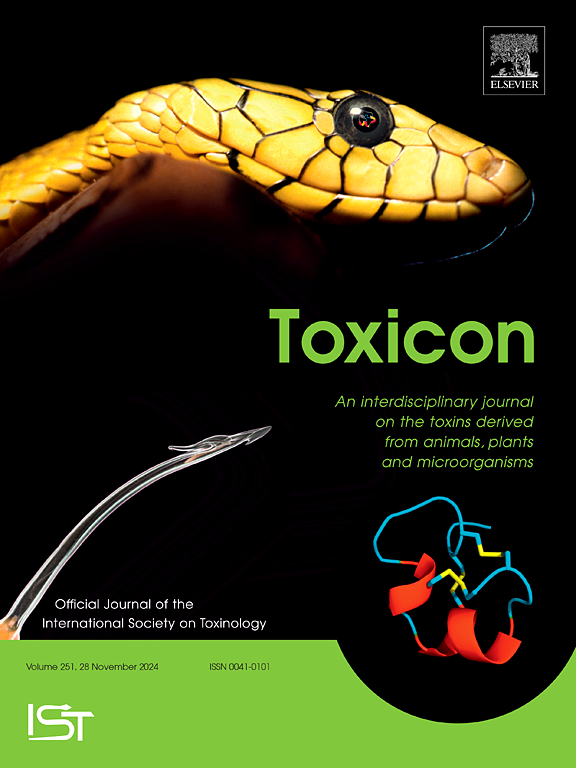Toxicity of bioactive compounds from Halocnemum strobilaceum against A549 lung cancer cells
IF 2.6
4区 医学
Q2 PHARMACOLOGY & PHARMACY
引用次数: 0
Abstract
This study investigates the toxicity of bioactive compounds isolated from the halophytic plant Halocnemum strobilaceum against A549 lung cancer cells. Sequential extraction using petroleum ether, chloroform, and methanol yielded various fractions, with the petroleum ether extract demonstrating the highest cytotoxicity. Through bioassay-guided fractionation and isolation techniques, including vacuum liquid chromatography and column chromatography, three compounds were identified: (1) Di(2-ethylhexyl) phthalate, (2) isorhamnetin-3-glucoside, and (3) quercetin-3-glucoside. The cytotoxic effects of these compounds were assessed using the MTT assay, revealing significant toxicity on A549 cells, with quercetin-3-glucoside exhibiting 78% cytotoxicity and isorhamnetin-3-glucoside showing 69% cytotoxicity at a concentration of 100 μg/mL. These findings suggest that the toxic effects of H. strobilaceum may be attributed to the presence of bioactive compounds, such as flavonoids and polyphenols, known for their antioxidant and free-radical scavenging capabilities. This highlights the potential of H. strobilaceum as a source of novel anti-cancer agents, warranting further studies to elucidate the mechanisms of action and explore therapeutic applications.

求助全文
约1分钟内获得全文
求助全文
来源期刊

Toxicon
医学-毒理学
CiteScore
4.80
自引率
10.70%
发文量
358
审稿时长
68 days
期刊介绍:
Toxicon has an open access mirror Toxicon: X, sharing the same aims and scope, editorial team, submission system and rigorous peer review. An introductory offer Toxicon: X - full waiver of the Open Access fee.
Toxicon''s "aims and scope" are to publish:
-articles containing the results of original research on problems related to toxins derived from animals, plants and microorganisms
-papers on novel findings related to the chemical, pharmacological, toxicological, and immunological properties of natural toxins
-molecular biological studies of toxins and other genes from poisonous and venomous organisms that advance understanding of the role or function of toxins
-clinical observations on poisoning and envenoming where a new therapeutic principle has been proposed or a decidedly superior clinical result has been obtained.
-material on the use of toxins as tools in studying biological processes and material on subjects related to venom and antivenom problems.
-articles on the translational application of toxins, for example as drugs and insecticides
-epidemiological studies on envenoming or poisoning, so long as they highlight a previously unrecognised medical problem or provide insight into the prevention or medical treatment of envenoming or poisoning. Retrospective surveys of hospital records, especially those lacking species identification, will not be considered for publication. Properly designed prospective community-based surveys are strongly encouraged.
-articles describing well-known activities of venoms, such as antibacterial, anticancer, and analgesic activities of arachnid venoms, without any attempt to define the mechanism of action or purify the active component, will not be considered for publication in Toxicon.
-review articles on problems related to toxinology.
To encourage the exchange of ideas, sections of the journal may be devoted to Short Communications, Letters to the Editor and activities of the affiliated societies.
 求助内容:
求助内容: 应助结果提醒方式:
应助结果提醒方式:


